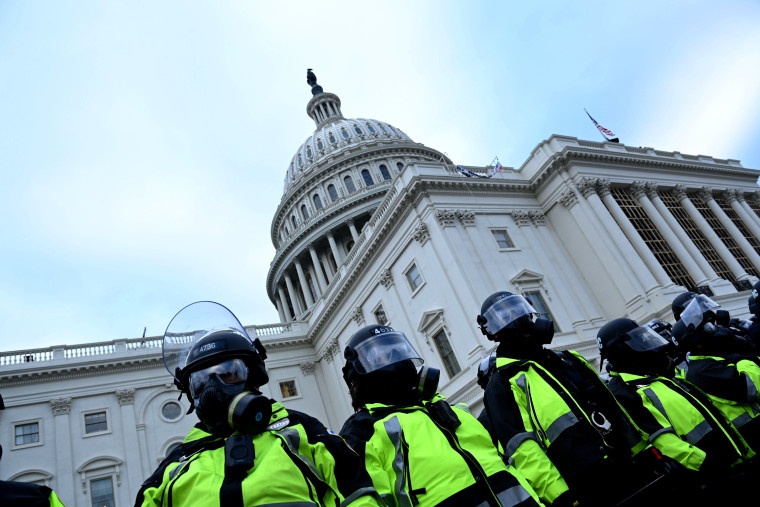Republicans in Congress were given the choice between war and dishonor, to paraphrase Winston Churchill. Out of fear, they chose dishonor, as many capitulated to President Donald Trump’s demands that they dispute the Electoral College’s results. On Wednesday, as violent radicals stormed the U.S. Capitol to attempt a coup, the war came to them anyway.
On Jan. 21, Trump will be out of office, but his legacy will be marked by the images of supporters breaching the “citadel of liberty,” as President-elect Joe Biden called it, occupying the Capitol, and potentially jeopardizing the lives of the elected representatives of the people.
Since 2015, Trump has directly incited violence against the media, against judges, against liberal activists and now against members of his own party. He has created a dream world for his supporters to inhabit and nurtured their anger for five years; in the end it collided with reality. The fallout is predictably horrific. The Biden administration and Congress will have to work together to prevent future attacks carried out by Trump-backed insurrectionists.
The Capitol Police seemed completely unprepared for the storming of the Capitol, even though the threat was explicit. Why? My theory is that they could not conceive of an army of conservatives as their main adversary, as the main threat. Video circulating on social media that appear to show the police opening a barrier for the rioters and taking selfies with them after they entered the building seems to back that up. Or perhaps they shared the mindset of those who thought Trump’s worst instincts could be contained, wished away, compartmentalized.
The Capitol Police seemed completely unprepared for the storming of the Capitol, even though the threat was explicit. Why?
Another likely reason for the lax response: The mental model of a mass, violent protest against the peoples’ representatives is in tension with the American system of openness and transparency. That’s why the buildings of the Capitol complex are open to the public, even when their security posture is fortified against terrorism and individual threats. We just don’t surround our powerful officials with security cordons; we don’t lock them away from the public; we accept an implicit bargain that the public should have access to elected officials. This in turn means that future hardening of the defense of the building itself won’t be easy, or popular.
As for the members themselves, a handful have permanent personal protective details, including presidential successors and congressional leaders. But through the years, few changes have come after members have been threatened whether at the Capitol or off-campus at the time.
In 1998, the perimeter was expanded when two Capitol Police officers were killed by a man who entered the Capitol and opened fire. In 2011, Rep. Gabrielle Giffords, a Democrat, was shot at near point-blank range by a 22-year-old man with no apparent motive in a supermarket parking lot in Arizona; five people were killed. Congress rethought its security procedures — and nothing changed. In 2017, when Rep. Steve Scalise of Louisiana, the Republican whip, was shot during a baseball practice in a Washington suburb by a man who was enraged by the election of Trump, Scalise's security detail returned fire and killed the man. Capitol Police completed a threat assessment, deployed extra security for a bit, but left their security procedures mostly unchanged.
Instead, the main focus has been on countering terrorism: In 2013, a 24-year-old dental hygienist was shot and killed by police after she breached a single perimeter with her car, about 150 yards from Capitol. Contingency planning scenarios include the possibility of a small group of armed terrorists aiming to disrupt a State of the Union event, but not what transpired on Wednesday.
As Terrence Gainer, a former chief of the Capitol Police, said on MSNBC: “We’ve exercised a lot of things, but not where 10,000 people could storm the building and we lose the exterior doors.”
The near-term future is grim. In countries with more developed histories of retributive violence, like Mexico, where drug cartels regularly murder prosecutors, there are literally thousands of specialized military officers who do nothing but stand watch outside the homes of court officials and the schools of their families.
Threats of retributive vigilante violence against elected officials are now a norm in America, thanks to Trump and his enablers.
The U.S. Capitol Police, with 1,800 sworn officers, doesn’t have the resources to protect every member of Congress everywhere they go, but it may be inevitable that every representative and senator will be asked to invite their local and state law enforcement to provide full-time protective details.
Judges are quite vulnerable, too. At this point, we should consider everyone in Trump’s rhetorical crosshairs a potential target. The U.S. Marshals Service has the responsibility for protecting justices of the Supreme Court when they travel, and for assigning details to federal judges who have received threats against them. They are understaffed here, too. The new Biden administration will have to spend precious time and money rethinking the basic security posture for people with public authority.
As much as we might will this truth away, this new tenor is here to stay.

